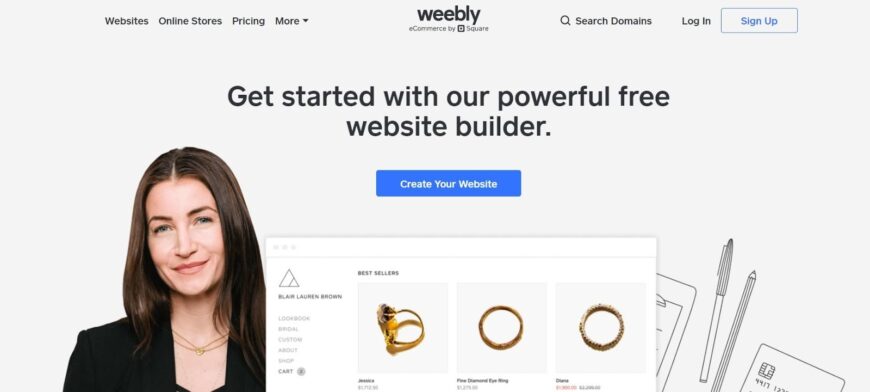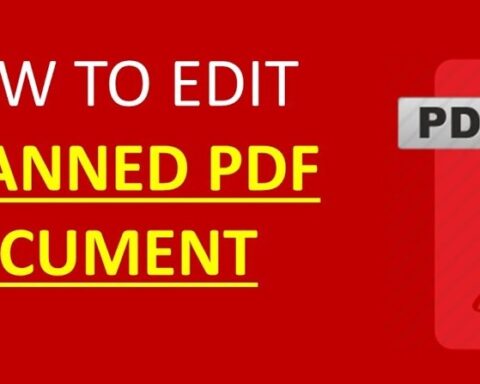Creating a website is one of the biggest steps you can take toward achieving your goals. From individual artists showing off their work online to businesses boosting their bottom lines with eCommerce, a website is the key to unlocking new opportunities and audiences.
It’s no wonder web design is becoming such a sought-after skill in today’s market. Thankfully, developing an impactful website has never been easier due to the dozens of web design tools available on the web.
Whether you’re a total beginner or an experienced web designer, many web tools offer easy-to-use drag-and-drop interfaces and code editors for basic languages like JavaScript and HTML. It’s never been easier to achieve the vision the web developer wants.
Your choice of what tools to use depends on your budget, the languages you will be using, and how much ease of use matters to you. Here are our top 10 recommendations for essential web design tools to help you get started quickly and easily.
1. Adobe Dreamweaver CC

Starting off with a product from a well-established brand name, Adobe Dreamweaver is a well-respected web design suite for professional developers. If you want a responsive and fully-customizable website that meets high-end standards, Dreamweaver does the job at a price to match.
The software combines a mix of visual editing and HTML coding so that even intermediate designers can interact with the code without significant programming knowledge. It’s decently easy enough to learn the platform, and the customizability ensures that you won’t be limited to someone else’s template.
Dreamweaver includes support for:
- HTML5
- Chromium Embedded Framework (CEF)
- Git (allowing the user to edit source code directly)
- Responsive design (optimizing the user experience for both mobile and desktop platforms)
Dreamweaver CC is part of Adobe’s subscription service known as Creative Cloud. The package includes PhotoShop, another incredibly useful web design tool, and a free trial of Adobe Stock for finding image resources.
2. Bluefish

The most minimalistic web design tool we’ve come across is Bluefish. Lightweight and fast, this web coding platform allows its users to modify online code.
Upon the fast installation, you are greeted to a text-only interface that lets you modify HTML, PHP, Java, XML, CSS, and many others. Working with remote files is also an option.
While the interface takes time to get used to, Bluefish is still suitable for relative beginners. It’s free of charge too, so there’s nothing to lose.
3. InVision Studio

Many web designers will agree with us when we say that InVision Studio is a complete package for web development. Globalgraphics Web Design recommends InVision Studio for designers who are especially interested in prototyping.
One speciality InVision supports is complex and creative transitions and animations that are sure to impress. You can even program in gestures like hovering and swiping.
4. JumpStory

In web design, stock images are tools of the trade. JumpStory gives you a huge number of image, video, and clip art resources. It even includes a commercial license for legal use on your website and editing options to help you tailor them to your individual needs.
One feature we many users find especially useful is TextMatch, an AI-powered search engine that finds the best images based on your search terms.
5. ProofHub

Proofing is an essential step in the web design process that many developers make the mistake of neglecting. ProofHub will tell you whether or not your design works before you settle on a final version.
It’s not a platform for creating websites directly, but we think it can help you plan and communicate your changes with your team during development.
6. Sketch

Another excellent prototyping tool is Sketch, which specializes in vector-based user interfaces. Businesses and online stores can benefit from Sketch the most.
With Sketch, we were able to create UI elements and reuse them throughout the website, resulting in a consistent user experience.
Straightforward to use and inexpensive, Sketch is an excellent option for those dealing with many vector drawings and graphics.
7. Webflow

We thought to include a cloud-based service in this list since those are becoming more and more common. While the user interface of Webflow does take some getting used to, the drag-and-drop interactivity ensures that little coding knowledge is required to get the most value out of it.
Webflow automatically generates HTML and CSS code for your website. Because it’s web-based, you get excellent cross-platform support. The starter package allows users to keep up with a maximum of two projects at a time, so upgrade to the premium package when you need it.
8. Weebly

Often described as the “DIY eCommerce builder,” Weebly should be on your list if you’re a marketing or online seller. Weebly creates professional-looking websites that are customizable and functional on a variety of platforms, including mobile devices.
Weebly is a content management system with drag-and-drop tools and online store templates. Even those without too much coding experience should have a good time with Weebly. And don’t forget about some of the eCommerce-focused features, including search engine optimization and sales analytics.
9. Wix

Are you a beginner with no technical coding skills? Fear not! Wix is a user-friendly web design tool with plenty of features to let you hit the ground running.
This website builder has over 500 templates to get started with. Just drag and drop images, animations, buttons, and other elements to create your perfect site. While the use of premade assets may limit your design choices somewhat, Wix offers a free trial that’s definitely worth trying.
10. WordPress

We couldn’t make a web design list without including WordPress. The WordPress platform offers an unparalleled degree of flexibility and customizability. It’s easy to use, comes with endless features and templates, and serves everyone from individual bloggers to large companies.
WordPress is another content management system, but arguably its biggest selling point is seamless integration with third-party add-ons. Add-ons let you customize and add extra functions to your site without too much programming skill.
WordPress is the best way to get a website going quickly. Community support in the form of add-ons and templates sweeten the deal. By the way, did we mention that WordPress supports around 38% of all websites on the Internet?




